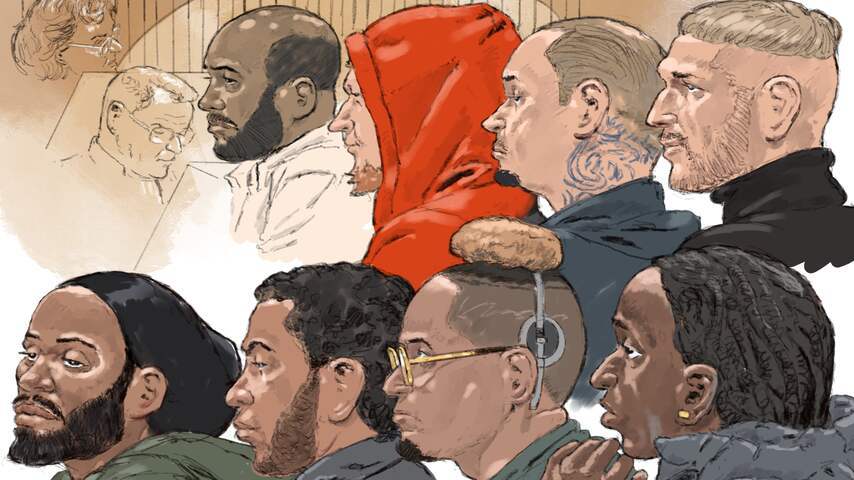
The Public Prosecution Service was involved in the appeal case about the murder of Peter R. de Vries by one of the main suspects, who was sitting in the courtroom with a hood on. Readers wondered if that was actually allowed.
“Is that because it’s too cold in the courtroom?” the lawyer-general asked when main suspect Krystian M. kept his hood on. He wanted to remain as unrecognizable as possible, also for the two court sketch artists. The Public Prosecution Service (OM) objected to this.
Despite this, there are no laws that require suspects to dress in a certain way, according to a spokesperson for the Council for the Judiciary. However, house rules apply in the buildings of the Judiciary.
“Wearing face-covering clothing is not allowed, unless this is necessary for safety or health,” the spokesperson said. The sanction for this is removal from the room.
“The dilemma of a chairman is that he or she wants the suspect to be present during the hearing. That is legally required,” says Schouten. According to him, the chairman wants the suspect to talk so that the victims can give their grief and sorrow a better place.
“The judge wants to be able to communicate well with someone,” explains criminal lawyer Willem Jan Ausma. Even though there are no dress codes, it is still wise to dress ‘neatly’, according to Ausma. “It’s just not useful. A judge is assessing your case. You shouldn’t antagonize them.”
Does wearing a cap or a hoodie have an influence on the judge’s verdict? “It shouldn’t, but judges are also people,” explains Ausma. According to him, it could “unconsciously play a role.”
A suspect wearing a hoodie can argue that he or she does this because of recognizability. Photos are never allowed, but court drawings are. So you could possibly be ‘recognizable’ on them.
Nicole van den Hout is a court sketch artist: “I am surprised that something was said about it. Most judges simply accept how they sit there.” She herself has experienced several times that a suspect makes himself unrecognizable by, for example, a scarf. “What I then do is simply draw what I see. That is then also part of the story,” says Van den Hout.
“I have also experienced that the suspect had a wig from the carnival shop and fake glasses without lenses,” says Van den Hout. Suspects sometimes do everything they can to be as unrecognizable as possible in the court drawing.
That is not entirely justified, according to Van den Hout. “They really won’t recognize you based on a drawing. I just don’t believe that. Even not with very good drawings. Then you already have to know someone and know that that person is on trial.”